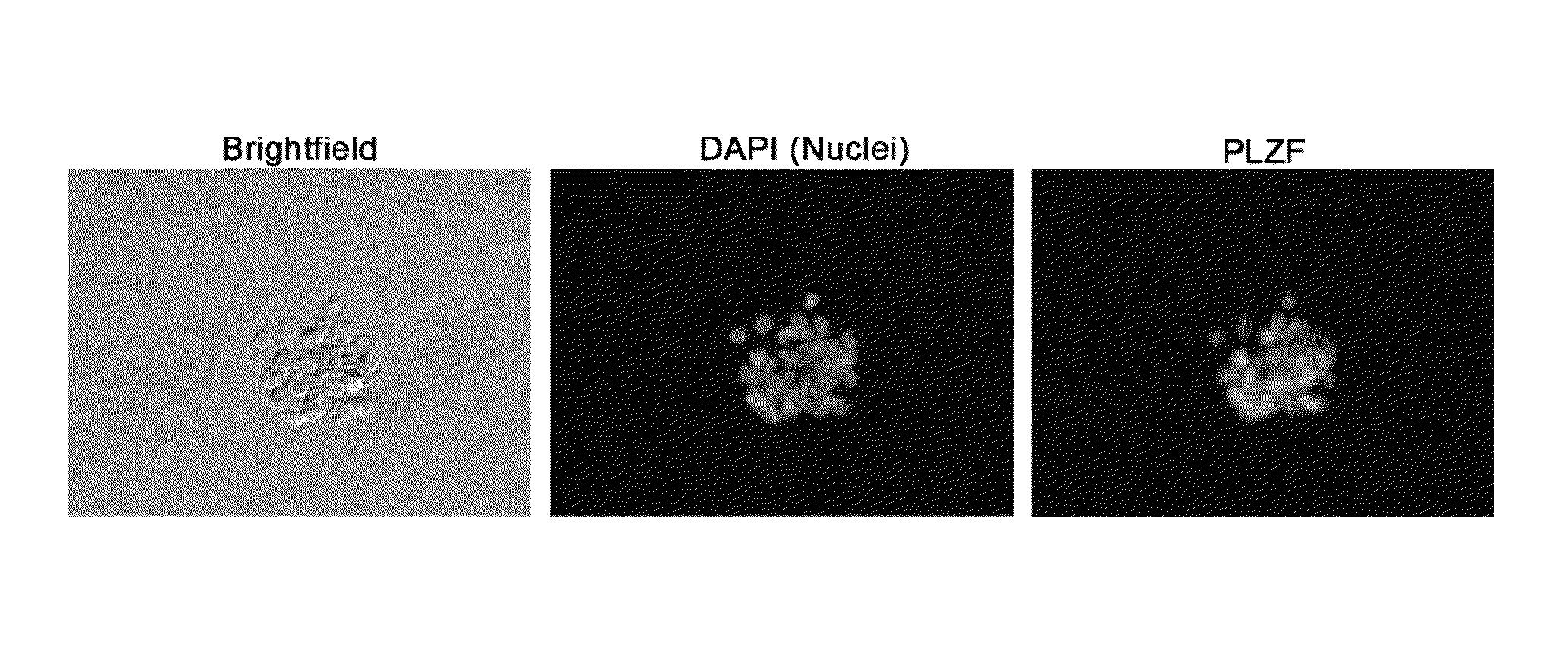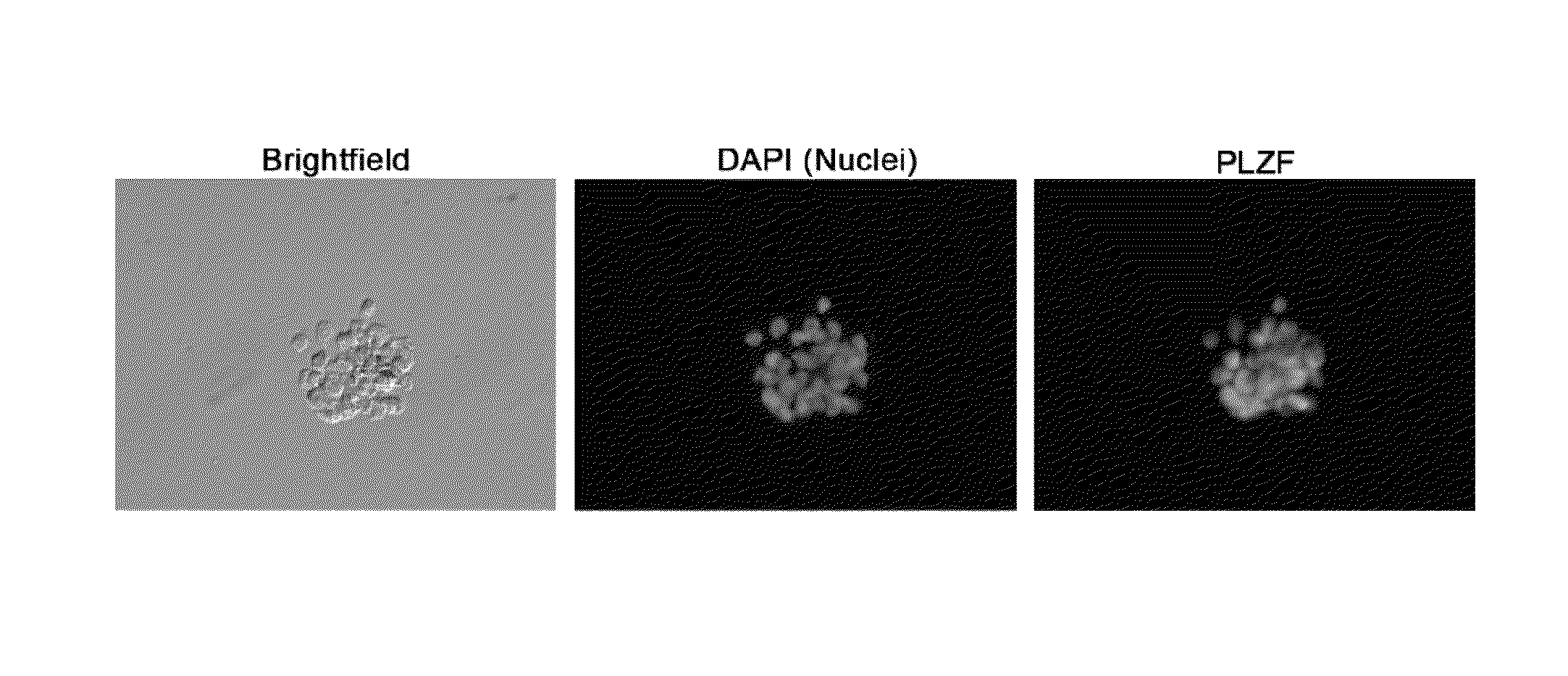Feeder-free method for culture of bovine and porcine spermatogonial stem cells
a technology culture methods, which is applied in the field of feeder-free method for culture of bovine and porcine spermatogonial stem cells, can solve the problems of contaminated stem cells with feeder cells, diminishing the usefulness of stem cell culture, and affecting the survival rate of stem cells, so as to achieve 100% germline transmission
- Summary
- Abstract
- Description
- Claims
- Application Information
AI Technical Summary
Benefits of technology
Problems solved by technology
Method used
Image
Examples
examples
Isolation and Culture of Bovine or Porcine Undifferentiated Spermatogonia
[0107]1. Prepare collagenase / DNase incubation solution (1-5 mg / ml collagenase, Worthington Biological and 5-10 mg / ml DNase, Sigma-Aldrich).
[0108]2. Manually tease apart 100-200 mg of dissected bovine or porcine testicular parenchyma using micro forceps and place into collagenase / DNase digestion solution.
[0109]3. Incubate at 37° C. with gentle swirling at a periodic interval until seminiferous tubules have separated.
[0110]4. Allow seminiferous tubule fragments to settle on ice, remove supernatant and wash in Hanks Balanced Salt Solution available from Life Technologies, Inc., Carlsbad, Calif. 92008 USA, (HBSS) or suitable physiological buffer. Repeat procedure until supernatant is relatively clear.
[0111]6. After last settling incubation, remove supernatant and re-suspend tubules in trypsin / DNase digestion buffer (Invitrogen).
[0112]7. Incubate at 37° C. and then add more DNase solution followed by pipetting to ma...
PUM
| Property | Measurement | Unit |
|---|---|---|
| homogenous | aaaaa | aaaaa |
| compositions | aaaaa | aaaaa |
| time | aaaaa | aaaaa |
Abstract
Description
Claims
Application Information
 Login to View More
Login to View More - R&D
- Intellectual Property
- Life Sciences
- Materials
- Tech Scout
- Unparalleled Data Quality
- Higher Quality Content
- 60% Fewer Hallucinations
Browse by: Latest US Patents, China's latest patents, Technical Efficacy Thesaurus, Application Domain, Technology Topic, Popular Technical Reports.
© 2025 PatSnap. All rights reserved.Legal|Privacy policy|Modern Slavery Act Transparency Statement|Sitemap|About US| Contact US: help@patsnap.com


